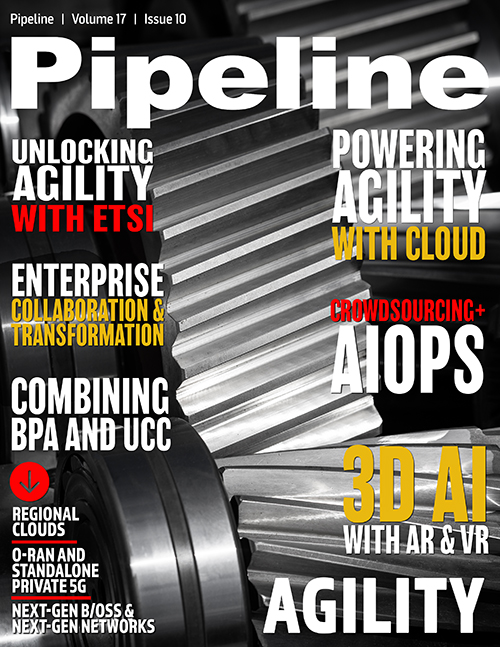Powering Agility with Openness and Automation
By: Prayson Pate

The dictionary defines agility as “the power of moving quickly and easily.” You want to achieve agility in your communications environment. But the question is how.
Let’s start with speed
Look at the two adverbs in the definition of agility. The first is quickly. Being able to move quickly means breaking out of the old mode of relying on traditional networking solutions. These are provided by a single vendor—and are closed. This means you must go to the supplier and convince them to add new capabilities or rip them out and replace them with another closed solution. This is not a great way to achieve quickness—or to maximize the value of your investments.
Fortunately, we have a good model to follow: the cloud. We’ve built the cloud as an open multi-vendor system, with best-of-breed software running on standard servers. We can load new applications on demand, giving us innovation with the speed we want.
We call this approach to openness disaggregation. It means we take formerly closed systems (such as a single-vendor computer and proprietary software), define an open and segmented architecture, break up the functionality, and reassemble it with components from different suppliers. And while this may sound complicated, we’ve been doing it for years.
Downloads
- Distributed cell site gateway from ADVA and Edgecore
- Accelerating 5G with simple and flexible transport networks
- WiTCOM open multi-vendor solution for smart city initiative
- Ensemble Virtualization FAQs
- FSP 3000 OLS - A versatile and truly open line system
Web Links
- ADVA products
- Resources: briefs, data sheets, videos
-
ADVA
innovation
- About ADVA
- Technically Speaking blog
ADVA Optical Networking
ADVA is a company founded on innovation and focused on helping our customers succeed. Our technology forms the building blocks of a shared digital future and empowers networks
across the globe. We’re continually developing breakthrough hardware and software that leads the networking industry and creates new business opportunities. It’s these open
connectivity solutions that enable our customers to deliver the cloud and mobile services that are vital to today’s society and for imagining new tomorrows. Together, we're building
a truly connected and sustainable future. For more information on how we can help you, please visit us at www.adva.com.
The first great example was the personal computer. We can now buy the computer hardware from one supplier, buy (or download) the operating system from another, and use applications from a diverse set of authors.
Another great example is the smartphone. With the advent of open smartphone platforms, we’ve seen an unprecedented wave of innovation, often tied to backend apps in the cloud. Would we have Uber without the smartphone and the cloud? No, because we didn’t have the required platform to enable the neccessary agility.
We’re now taking the idea of disaggregation from the personal computer, cloud, and smartphone into the world of communications. Let’s look at some examples.
Bringing the cloud to the network
Back in 2013, the telecom operators invented network functions virtualization, or NFV. They saw the innovation occurring in the cloud and wanted to achieve that same agility in networking. With NFV we can take a closed network device such as a router or firewall and disaggregate it into hardware and software. We can create an equivalent function by running a best-of-breed application on a standard server, just like with a smartphone. And we’re now seeing that approach come to market. With virtualized services, end users can add, change, and stop managed services by going to a portal in real time. Operators can provide value-added services like local hosting of applications for distributed cloud. All this is possible because we can download new functionality on demand.




















